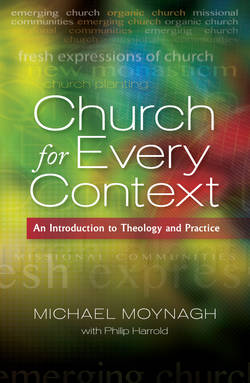Читать книгу Church for Every Context - Michael Moynagh - Страница 28
На сайте Литреса книга снята с продажи.
Sustaining the ‘mixed economy’
ОглавлениеWithin fresh expressions circles, there are frequent references to the mixed-economy church, in which inherited church (with its inherited life and structures) and new forms of church exist side by side, in mutual respect and support. But this is not always easy. Are there lessons that can help us from the New Testament church?
Ray Anderson has argued that the Antioch church can be seen as emerging out of the church at Jerusalem. Under Paul’s ministry and teaching, it produced an emergent theology, based on the Spirit’s revelation about Jesus. This theology was very different to that of the Jerusalem church, which was committed to historical precedent and the tradition of the Twelve. He claims that
the emerging churches in our present generation can find their ecclesial form and their core theology by tracing out the contours of the missionary church under Paul’s leadership based at Antioch. (Anderson, 2007, p. 21)
Unfortunately, Anderson’s reading of the New Testament privileges new expressions of church over inherited forms and their traditions. Jerusalem, which in Anderson’s reading can be seen as an inherited church, appears to be the big problem. It is ‘controlled by a fortress mentality’ (Anderson, 2007, p. 27). Anderson underlines the conflicts between Antioch and Jerusalem, but downplays their attempt to stay together and ignores the range of views that existed among believers in Jerusalem (and in Antioch, too, presumably).
Jerusalem can be viewed more sympathetically if we understand the troublesome problem of identity the early believers faced. The key question for the Jerusalem followers of Jesus, as for many in the inherited church now, was how to make space for believers with a very different sense of spiritual identity.
